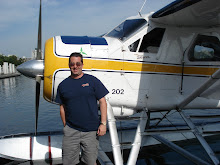

Born in Port Glasgow in 1900, the family moved to Port Chalmers, in New Zealand a few years later where he attended Otago Boys High School along with his brothers. Towards the end of the First World War, the family returned to Scotland and took up residence in Prestwick. Bob, and his younger brother, Alan, were indentured as Marine Draughtsman at the Irvine Shipyard. It was during the time in Prestwick that Bob became interested in Aircraft - the Royal Flying Corps were using the old Ayr Race Course as a flying field and a Sopwith Camel force landed on the gold course near their Prestwick home. Later Bob moved with the family to Larne in Northern Ireland were he worked at the Olderfleet Shipyard.
In the 1920's Short Brothers of Rochester, Kent, had moved into the building a series of military and civil flying boats and bob moved to Rochester and worked on the design of the Singapore Flying Boat. A few years later Bob moved to Hawker Aircraft at Kingston and contributed to such famous names as the Fury and the Hind. In the early 1930's he was the Chief Draughtsman of the Project Design Office and working on the prototype Hurricane fighter. When Sydney Camm, later Sir Sydney, the Chief Designer was taken seriously ill, Bob found himself in charge of the project. Whiles working on the developments of the Hurricane, he was also involved with the prototypes of the Typhoon and Tempest fighters.
In 1942 Bob was suddenly 'invited' to become Chief Designer at Scottish Aviation. An empty house was commandeered under the emergency powers for him and his family and he was amazed to find it was only two hundred yards from the old family house on Monkton Road where he had lived as a teenager. In 1943 Bob found himself flying to America as part of the British
Commission negotiating for the supply of bombers and fighters for the RAF. Scottish Aviation was to play a vital role in ensuring that the American aircraft would be modified to the requirements of the RAF.
At the end of the war, Scottish Aviation seized upon the opportunity to convert ex-military aircraft for civil use. The contacts Bob had made in America proved vital in quickly securing the necessary drawings and approval of the American manufacturers to the proposed modification and changes. Under his guidance the design staff at Prestwick modified aircraft such as the Dakota.
Bob always made it clear that the success of the Prestwick Pioneer and the Twin Pioneer was the result of team work by the entire design team and everyone else at Scottish Aviation. He always played down his own part as the leader of the team.
In 1956 the Royal Aeronautical Society honoured Bob's contribution to aeronautics and made him an Honorary Fellow.
